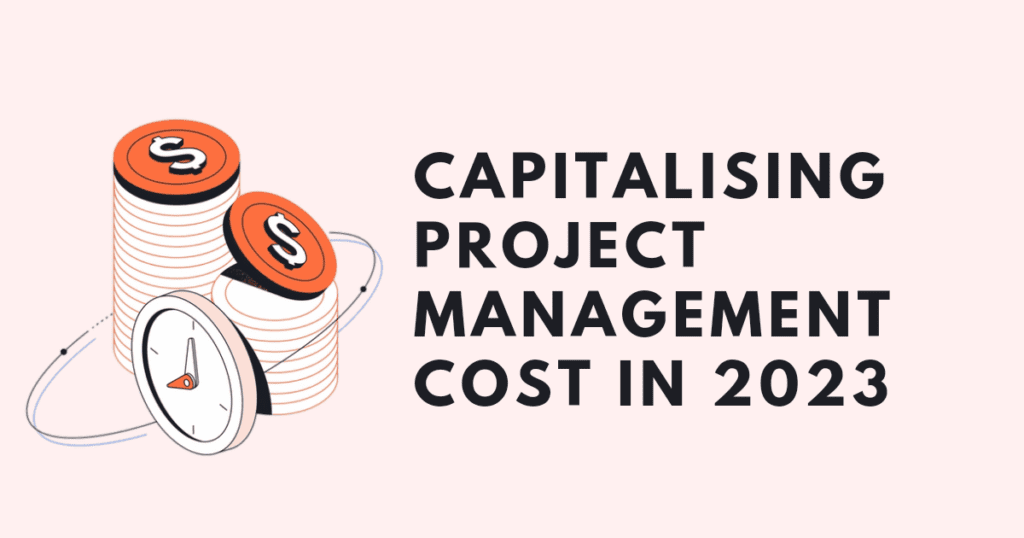Are you a business owner or project manager looking to get a better handle on your project management costs in 2023? Project management costs can include everything from salaries and software expenses to administrative costs and equipment. These costs can quickly add up and impact on your bottom line. But have you considered capitalizing these costs instead of expensing them?
Capitalizing on project management costs can have a significant impact on your business’s financial health. By capitalizing on these costs, you can spread them over the useful life of a project, reduce their impact on your current profits, and better track project costs. It’s a powerful tool for maximizing profits and staying competitive in today’s market.

That’s why we’ve put together this ultimate guide to help you understand everything you need to know about capitalizing project management costs in 2023. From definitions and types of project management costs to requirements and guidelines for capitalization, we’ve got you covered.
We’ll also explore the different methods for capitalization and provide real-world examples to help you put these principles into practice. By the end of this guide, you’ll have the knowledge and tools you need to capitalize on project management costs effectively and efficiently.
Key Takeaways
- Project management costs include all expenses incurred to plan, manage, and oversee projects.
- Capitalizing allows businesses to spread these costs over the useful life of a project, reduce their impact on current profits, and better track project costs. This can lead to improved financial health and competitiveness.
- Businesses can choose to either capitalize or expense project management costs. The decision should be based on the company’s specific circumstances, financial goals, and resources.
- Generally Accepted Accounting Principles (GAAP) provide guidelines for capitalizing costs. The costs must be directly related to the project, necessary for completing it, generate future economic benefits, and be reliably measurable.
- There are three main methods for capitalizing project management costs: direct, indirect, and combination. The method used depends on the nature and complexity of the project.
- Best practices for capitalizing These costs include documenting and tracking all costs associated with a project, allocating costs appropriately, and reviewing and approving costs before capitalizing them.
- Challenges of capitalizing project management costs include the potential for inflated balance sheets and the need for thorough documentation and tracking systems.
Use the software to manage the whole construction management process
Understanding Project Management Costs
Now that you have a general idea of project management costs and the advantages of capitalizing them let’s take a deeper dive to uncover these costs in more detail.
These costs can be broadly defined as the expenses incurred by a business to plan, manage and oversee projects. These costs may be direct or indirect depending on the type of project, industry and size of the company.
Project management costs can range from employee salaries and software purchases to office supplies, travel, and equipment rentals. This category may also include indirect costs such as overhead expenses or administrative charges.
Costs, such as salaries for project managers, team leaders and support personnel, are common. Expenses like project management tools, time tracking software and communication software may also be significant expenses for businesses. Office supplies, travel costs and equipment rentals can add up quickly and significantly impact on the final cost of a project.
Understanding the various project management costs is essential for accurately tracking project expenses and making informed decisions about which costs should be capitalized. The following section will define capitalization versus expense and discuss the advantages of capitalizing project management costs.
Capitalization vs. Expensing
When it comes to project management costs, businesses have two choices: capitalization or expense. Here’s what you should be aware of:
Capitalization refers to adding project management costs to the balance sheet as an asset, while expensing requires deducting those costs from revenue in the period they are incurred.
Capitalizing project management costs has several advantages, such as improved accuracy in measuring a project’s financial health, better long-term planning, and the potential to increase a company’s asset base. On the contrary, capitalizing projects may lead to inflated balance sheets and require more thorough documentation and tracking systems.
Expensing can offer immediate tax benefits and be simpler to implement, but it limits a company’s capacity for long-term planning and accurately measuring project profitability.
Ultimately, the decision to capitalize or expense project management costs depends on a company’s specific circumstances, financial goals and resources. It’s essential that companies carefully consider both pros and cons before making a final determination.
Capitalizing Project Management Costs: Requirements and Guidelines
If you’ve decided to capitalize on project management costs, it’s important to understand the requirements and guidelines that must be followed. Generally Accepted Accounting Principles (GAAP) provide guidelines for capitalizing project management costs.
Under GAAP, to capitalize on project management costs, they must meet certain criteria. First, the costs must be directly related to the project and must be necessary for completing the project. Second, the costs must generate future economic benefits for the business. Finally, the costs must be reliably measurable.


Several factors determine if project management costs can be capitalized. For example, the costs must be identifiable and separable from other expenses. They must also be related to a specific project or asset, and their useful life must be determined. Finally, the cost must be significant enough to warrant capitalization
To best capitalize on project management costs, it’s important to follow best practices. For example, it’s important to document and track all costs associated with a project, including both direct and indirect costs. It’s also essential to allocate costs appropriately to ensure they are accurately attributed to the project.
Another best practice is to ensure that all costs are reviewed and approved by the appropriate personnel before being capitalized. This helps to ensure that all costs meet the requirements for capitalization and are accurately reflected in financial statements.
By following these guidelines and best practices, you can effectively capitalize on project management costs and improve your business’s financial health.
Methods for Capitalizing Project Management Costs
When it comes to capitalizing project management costs, there are three main methods you can use:
- The direct method, which is best for simple projects, involves assigning project management costs directly to the project that incurred them.
- The indirect method is best for complex projects and involves assigning project costs to a cost pool and then allocating that cost pool to one or more projects.
- The combination method involves using a combination of the direct and indirect methods, which is best for projects that have a mix of simple and complex cost allocation requirements.
No matter which method you use, it’s important to properly identify and document costs and allocate them accurately to the relevant projects. For example, some costs that can be capitalized include project manager salaries and training, travel expenses, and overhead costs related to the project.
The method you use will depend on the nature and complexity of your project, so be sure to track and document all costs carefully to ensure accurate allocation.
Challenges of Capitalizing Project Management Costs
Capitalizing project management costs can provide many advantages for businesses, but it is not without its challenges. Here are some of the potential issues businesses may encounter when trying to capitalize expenses:
Internal Challenges:
These may include a lack of comprehension regarding the capitalization process, insufficient resources to track and document costs, as well as difficulty determining which costs are directly associated with a project.
External Challenges:
External challenges may include changes to regulations, difficulty accurately measuring costs, and difficulty allocating expenses to specific projects.
Mitigating Challenges:
Businesses can take several steps to mitigate these difficulties. For internal difficulties, businesses should educate and train staff on the capitalization process, provide resources for tracking costs, and establish clear procedures for determining which costs are directly associated with a project.
For external challenges, it’s essential to stay abreast of evolving regulations and guidelines, collaborate closely with vendors and contractors in order to accurately measure costs, and create a systematic way of allocating expenses to specific projects.
It is essential to regularly review, and audit capitalized costs in order to guarantee they remain accurate and adhere to GAAP guidelines.
By comprehending and overcoming these challenges, businesses can successfully capitalize project management costs and improve their financial health. In the following section, we’ll look at some real-world examples of businesses that have successfully capitalized expenses and the rewards they’ve seen as a result.
The bottom line
Capitalizing project management costs can give businesses a better insight into the financial health of a project, enabling them to make better informed decisions about future endeavors. Here are the key takeaways:
Project management costs encompass all expenses related to project management. Capitalizing these costs involves adding them onto the balance sheet as an asset, rather than depreciating them as they are incurred.
Capitalizing project management costs can be done through several methods, including the direct method, indirect method and combination approach.
Capitalizing costs can present both internal and external issues, but these can be managed through education, effective procedures, regular review and auditing.
By 2023, businesses must recognize the advantages of capitalizing project management costs and take steps to address any challenges that may arise. Doing so will enable them to make better-informed decisions about their projects while improving their overall financial health.


